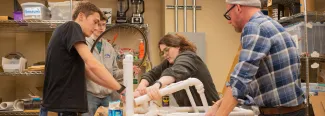
A group of Health, Wellness, and Occupational Studies students create functional wheelchairs out of PVC materials while learning about assistive technology and community mobility.
For University of New England student Erin Cormier, assistive technology is all about accessibility — for everyone to have the tools and resources they need to live with more independence.
Accessibility is at the core of what Cormier (Health, Wellness, and Occupational Studies, ’25) and her classmates learned about in the course, “Assistive Technology Community Mobility.” The course provides students with hands-on skills related to seating and mobility, transportation, and recreation.
As an assistive technology project, the class created wheelchairs in the Makerspace out of PVC. The wheelchair is one example of assistive technology, Cormier explains, which is any device — from a pencil grip or screen reader to a cane and wheelchair — that helps increase, maintain, or improve the functional capabilities of people with disabilities.
Cormier’s team built the wheelchair to fit her body specifically. “This project was very eye-opening for a lot of us because we often think wheelchairs are expensive and bulky, but that’s not always the case — you can build a chair to serve someone with materials from the hardware store,” she said.
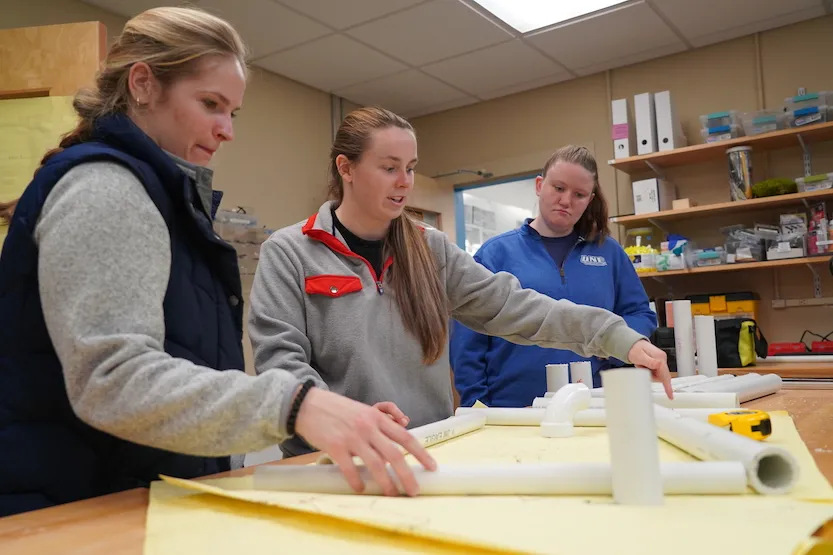
Jared Benoit (Health, Wellness, and Occupational Studies, ’25), who has taken several other Assistive Technology specialization courses at UNE, said he understands the importance of knowing the inner workings of tools he will one day use as a practicing OT.
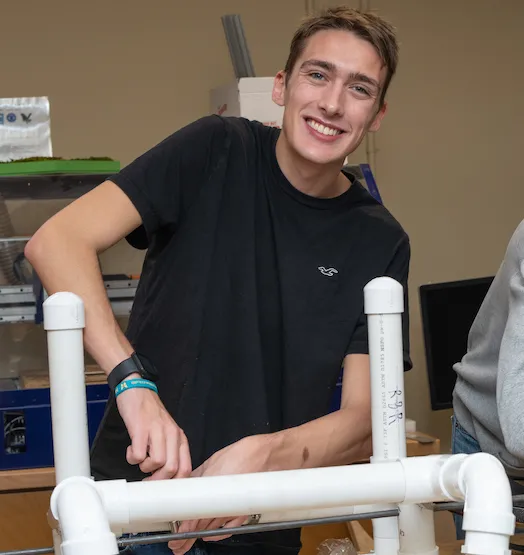
“Assistive technology plays a huge part with just making things more adaptable and helping individuals be able to complete their goals,” said Benoit, who plans to pursue a career in occupational therapy when he graduates. “Having the opportunity to work in UNE’s Makerspace and actually build a wheelchair from scratch is truly a one-of-a-kind experience for a pre-OT student like myself.”
For Assistant Clinical Professor Chris Delenick, O.T.D., OTR/L, an experienced occupational therapist and assistive technology instructor, teaching UNE students about community mobility through wheelchair construction helps drill down (literally) the idea of creative problem solving.
“I think this type of hands-on learning in the Makerspace really plants the seeds for students to harness their ingenuity as future occupational therapists or assistive technology professionals,” he said.
Learn More About the Community Mobility Class
The courses offered through UNE’s Assistive Technology specialization provide students with a distinct opportunity to either enhance their occupational studies (pre-OT) curriculum or get exposure to the growing field of assistive technology professionals (ATPs).
“There is a significant need nationwide for practitioners working as ATPs,” explained Professor Delenick. “If students discover they don’t want to go straight into grad school (or maybe it isn’t for them), then entering the field as an ATP is something you can do with a bachelor’s degree.”
Split into two small groups, the class worked together with P.D. Makerspace staff on all of the cutting, drilling, mapping, printing, and assembling of wheelchair materials. For many, it was their first time using all the resources in the Makerspace, including the new laser cutter.
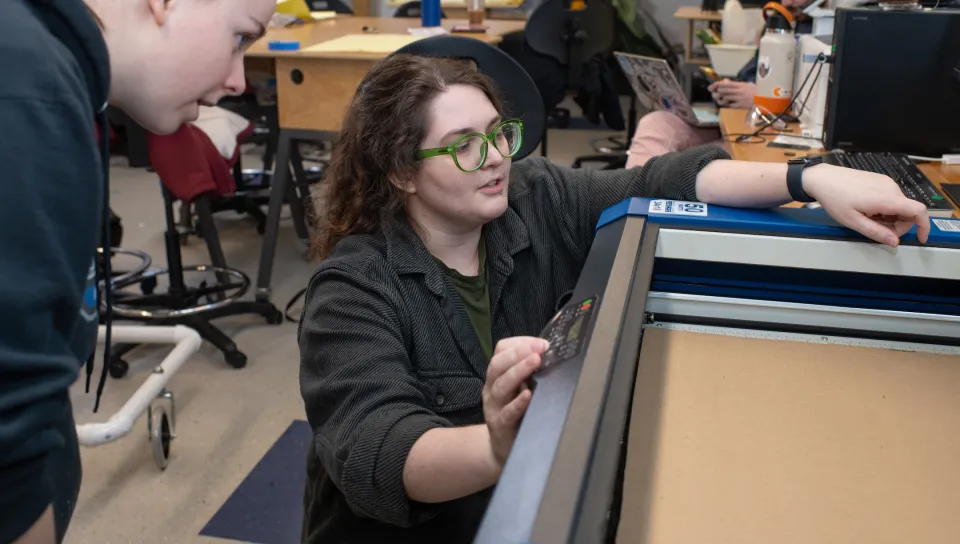
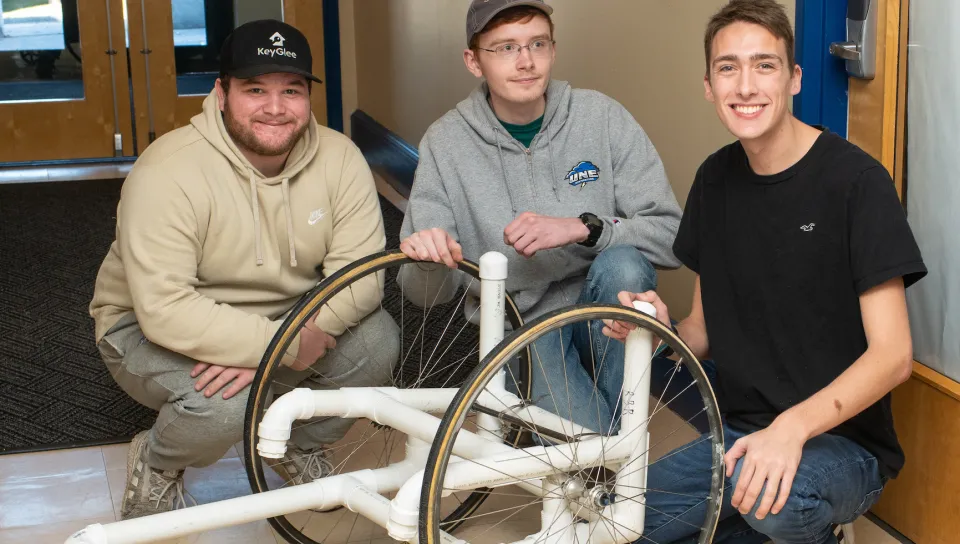
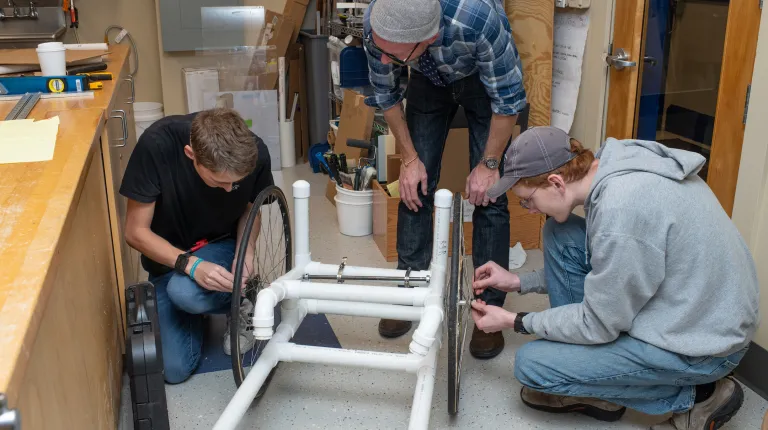
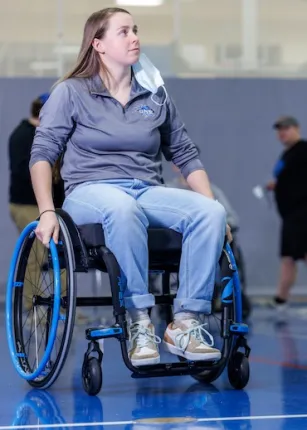
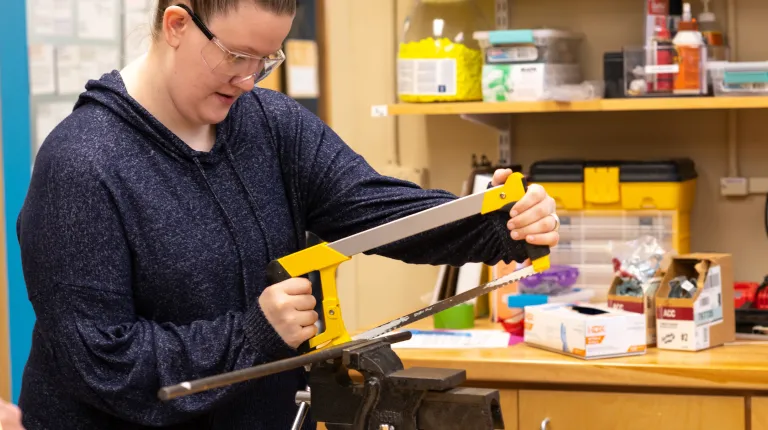
As Cormier and her group quickly found out, building wheelchairs is no easy feat. “It’s a lot harder than we imagined,” she said. “There are a lot of things I didn’t know about wheelchairs that we were able to explore because of building first-hand in the Makerspace.”
In addition to constructing wheelchairs, students in this assistive technology class also had several other collaborative learning experiences, including participating in local wheelchair clinics, a physiological response lab activity with wheelchairs, and meeting wheelchair users.
For Benoit, he said it was one of the best parts of the class. “Working in the local community was a great experience because we got to see first-hand how wheelchairs have an impact on people who use them. This is the type of experience you can’t learn from a textbook.”